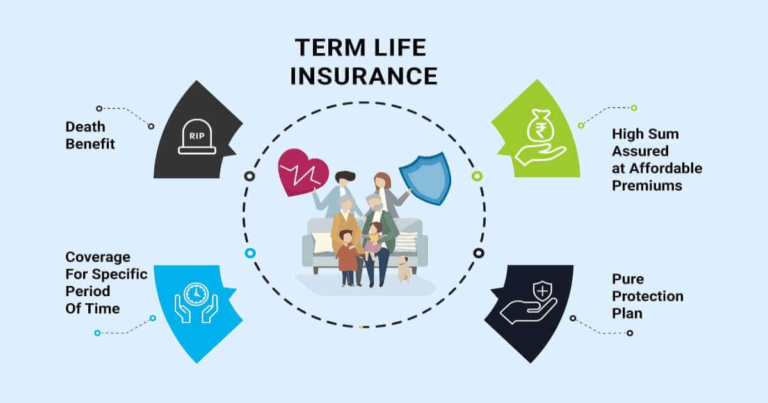Group Life Insurance: Everything You Need to Know About Protecting Employees and Their Families
When we talk about financial protection and peace of mind, most people think about savings accounts, personal investments, or taking out their own life insurance. But here is something many employees do not always realize. One of the most valuable financial protections can often come from the workplace itself in the form of Group Life Insurance. It is not as heavily advertised as individual policies, yet it plays a vital role in keeping families financially secure when the unexpected happens.
Group Life Insurance is essentially a life insurance policy arranged by an employer for its employees. Instead of employees taking out individual cover with separate applications, separate premiums, and medical checks, a single group policy is set up that includes all eligible staff. This arrangement not only provides employees with immediate life cover but also gives employers a way to show they genuinely care for their teams. In today’s competitive job market, benefits like this can be the difference between a company that retains talent and one that struggles with constant turnover.
What is Group Life Insurance
To put it simply, Group Life Insurance is a benefit that pays out a lump sum to an employee’s chosen beneficiary if that employee passes away while still employed. The payout is usually based on a multiple of the employee’s salary. For instance, if the policy is set to three times the annual salary and the employee earns forty thousand a year, the beneficiary would receive one hundred and twenty thousand in the event of death.
One of the most attractive aspects of Group Life Insurance is that employees are automatically covered once they join the company scheme. They do not have to go through the long process of filling out extensive forms or proving their medical history. For people who may have been denied private cover or who cannot afford it, this benefit can be life changing.
Why Group Life Insurance Matters
It is easy to underestimate the significance of this type of cover until you really picture the circumstances. Imagine a family where the main breadwinner passes away suddenly. The financial shock alone can be devastating. Group Life Insurance provides an immediate safety net so that the family can stay afloat.
There are several key reasons why this matters so much. First, it provides direct financial protection for families. The payout ensures that dependents are not left struggling to meet day-to-day living expenses, pay off loans, or cover school fees. For many families, this immediate support is the bridge that allows them to keep their stability during the most difficult time.
Second, it gives employees peace of mind. Knowing that their loved ones would not be left completely unsupported allows employees to focus better at work and feel less stressed about future uncertainties. That sense of reassurance cannot be overstated because it influences overall wellbeing.
Third, it acts as a valuable employee benefit. In industries where staff recruitment and retention are challenging, Group Life Insurance adds real weight to a benefits package. A company that includes it demonstrates a level of care that job seekers and current employees notice.
Finally, it promotes inclusivity because it does not rely on individual health status. People who have medical conditions that make it hard to secure life cover on their own are still able to access protection through their employer’s scheme.
How Group Life Insurance Works
The mechanics of Group Life Insurance are fairly straightforward but worth understanding in detail. The employer is the policyholder. The company arranges the scheme with an insurer and pays the premiums, either fully on behalf of employees or sometimes by sharing a portion of the cost with staff.
Eligibility is normally tied to employment status. For example, the scheme may cover all permanent employees or may begin once someone has completed a probationary period. The benefit amount is generally set as a multiple of salary, but sometimes companies set it as a fixed lump sum for all.
Each employee chooses a beneficiary by filling out a simple nomination form. This ensures that the payout goes directly to the person they wish to support. In many cases, policies are structured in trust, which allows payouts to bypass long probate delays so that families can access funds quickly.
Advantages for Employees
Employees often underestimate just how valuable Group Life Insurance is until they pause to consider what it offers them. First, it usually requires no medical exams. Unlike personal life insurance policies where health questionnaires can affect premiums or even block access, group policies include employees automatically.
Second, it is an effortless process. Once employed, the employee is typically added to the scheme without needing to go through any separate applications.
Third, the financial safety net is meaningful. If something were to happen, the payout is often several times the annual salary, which can cover immediate costs and help with long term planning.
Finally, for many employees, the cover comes at no extra cost. Even when there are contributions, they are generally small compared to the cost of private life insurance.
Advantages for Employers
Employers are not just offering a benefit out of goodwill. There are strategic advantages as well. Group Life Insurance strengthens a company’s ability to attract talent. Job seekers compare benefits and often make decisions based on which company offers stronger support.
It also boosts loyalty. Employees who feel cared for are less likely to look elsewhere and more likely to stay engaged with their work. Retention rates rise when staff know their employer is invested in their wellbeing.
From a financial standpoint, Group Life Insurance is cost effective. The group structure means insurers can offer coverage at lower premiums compared to individual plans. This makes it a budget friendly way for employers to provide meaningful security.
Finally, offering this cover reflects positively on corporate values. It shows that the business prioritizes social responsibility and employee welfare, which in turn enhances the company’s brand and reputation.
Limitations of Group Life Insurance
As with all types of cover, Group Life Insurance has its boundaries. The first limitation is that the policy is tied to employment. If an employee leaves the company, they typically lose their cover. Unless they arrange their own policy, they may be left uninsured.
Second, while the payout is helpful, it is not always enough. Families with large mortgages or high long term financial commitments might require additional private life insurance to close the gap.
Third, employees have limited flexibility with group policies. They cannot usually adjust the benefit level or add features the way they could with a personal plan.
These limitations do not diminish the value of Group Life Insurance but highlight why it should often be seen as part of a broader protection strategy.
Making the Most of Group Life Insurance
Employees can maximize this benefit by ensuring their beneficiary nominations are always up to date, especially after life events such as marriage, divorce, or the birth of a child. They should also take time to understand how much the payout would be and whether it is enough to meet family needs. If it falls short, arranging personal cover to supplement the group policy is wise.
Employers can make the most of their scheme by communicating its value clearly to employees. Many staff members may not even realize they are covered. By explaining how it works and guiding employees through nomination processes, employers can increase appreciation for the benefit. Regular reviews of the policy can also ensure it stays competitive and relevant to the workforce.
Why Group Life Insurance is Becoming More Popular
Group Life Insurance has gained traction as more companies prioritize employee wellbeing. With rising costs of living and increasing awareness of financial pressures, businesses recognize the importance of offering benefits that go beyond just salary. Employees today want workplaces that support their whole lives, not just their nine to five roles. By providing this cover, companies are building cultures of trust and care that strengthen the employer employee relationship.
Conclusion
Group Life Insurance is more than a policy. It is a gesture of support that creates security for families and fosters stronger connections between employees and employers. For employees, it brings peace of mind knowing that loved ones would not be left without support. For employers, it enhances their ability to attract talent, retain skilled workers, and build a caring reputation.
At its heart, Group Life Insurance is about people. It is about making sure that when the unthinkable happens, families have the financial means to carry on. And it is about creating workplaces where employees feel valued, protected, and supported in ways that truly matter.






